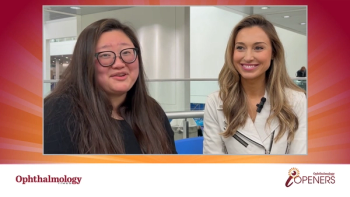
Obamacare confusion bad for ophthalmology
The Affordable Care Act (ACA) has clouded the future of ophthalmology, said William L. Rich, MD.
New Orleans-The Affordable Care Act (ACA) has clouded the future of ophthalmology, said William L. Rich, MD.
“The whole future is uncertain and we don’t have a role in it,” said Dr. Rich, medical director of health policy for the American Academy of Ophthalmology.
Though Dr. Rich said he supports the ACA, he blamed politics for causing the health-care overhaul to have several major problems, many of which affect ophthalmologists.
He cited the implementation delay, website design flaws, as well as low penalties for non-participation by young and healthy people as causes for the overhaul’s complications and confusion.
Furthermore, these problems have not just caused comprehension confusion-they will also result in fewer patients seeking medical care, he said.
Many of the health-care plans set by the ACA will have high deductibles, which will decrease patient utilization as well, he said.
While Dr. Rich acknowledged high deductibles are good for the system, they are a problem for ophthalmologists because high deductibles mean fewer patients will seek care for chronic disease, thus increasing the long-term costs.
“That is a huge problem for the division of care and physicians, no matter the practice,” Dr. Rich said.
The ACA’s new payment models-combined with the lack of relief on documentation guidelines and regulations-cause major problems for ophthalmologists as well, he said.
“How can they really control costs if patients can see anyone,” Dr. Rich asked. “All these create big problems.”
The ACA was supposed to increase patient care and utilization in 2014, Dr. Rich said.
Instead, he said, “you’re going to see more patients, (but) fewer than we anticipated.”
Unfortunately, Dr. Rich said, the outlook for 2014 is just not what many had hoped it would be.
However, all is not lost, he stressed.
“There’s still some time for them (the government) to get the Act together, because most of the problems come from political decisions not the value of the Act, the intent of the Act,” Dr. Rich said.
For more articles in this issue of Ophthalmology Times Conference Brief click
To receive weekly clinical news and updates in ophthalmology,
Newsletter
Don’t miss out—get Ophthalmology Times updates on the latest clinical advancements and expert interviews, straight to your inbox.













































